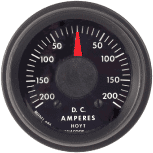Mwilliamshs
Explorer
It's one of those ideas that woke me up in the middle of the night. I could use a second belt-driven alternator on the engine to charge the house batteries. Not crazy at all and already my plan. Use a charge controller (Morningstar MPPT for example) between the alternator and batteries just like the alternator were a solar panel. Maybe a little odd. Use a 24v alternator for the second alternator and let the MPPT controller use the extra voltage to achieve a more complete charge than would normally be possible by alternator. Okay there's the crazy idea. Obviously a charge controller capable of handling 27v and at least 70 amps would be necessary, more amps more better, but feeding the controller 27v and 70 amps input should be at least 14.8v and lots of amps output, right? The controller shouldn't care where the power comes from, right?
.
How crazy am I?
Alternator
.
This unit is rated at 70 amps 24v and 160 amps 12v max output. It's only got 44% of the 12v output amperage at 24v but I'll let the charge controller worry about that. If you look at the 24v performance curve link near the bottom of that page you'll see that at 2000 rpm it's putting out 40 amps, and at 4000 it's 70ish. Driving the alternator at double engine speed (Ford 300 straight six, 4000 rpm redline) would yield 40ish amps just above idle @ 24v which should be 90ish amps @ 12v (40 is 44% of 90) and comparing that to the 12v performance curve it all checks out.
.
For a charge controller, the Morningstar TS-MPPT-60 is rated at 1600w @ 24v Nominal Maximum Solar Input, which is 66 amps. It's also rated for 3200w @ 48v which is 66 amps and 800w @ 12v, again, 66 amps. Let's call its capacity uhm, 66 amps (60 amps nominal, hence the 60 in TS-MPPT-60). The alternator above should be outputting less than 66 amps up to about 3250 rpm, or 1,625 crankshaft rpm. Obviously a problem. I need to find a different charge controller I guess. Suggestions?
.
Apollo Solar 80amp Charge Controller
.
How crazy am I?
Alternator
.
This unit is rated at 70 amps 24v and 160 amps 12v max output. It's only got 44% of the 12v output amperage at 24v but I'll let the charge controller worry about that. If you look at the 24v performance curve link near the bottom of that page you'll see that at 2000 rpm it's putting out 40 amps, and at 4000 it's 70ish. Driving the alternator at double engine speed (Ford 300 straight six, 4000 rpm redline) would yield 40ish amps just above idle @ 24v which should be 90ish amps @ 12v (40 is 44% of 90) and comparing that to the 12v performance curve it all checks out.
.
For a charge controller, the Morningstar TS-MPPT-60 is rated at 1600w @ 24v Nominal Maximum Solar Input, which is 66 amps. It's also rated for 3200w @ 48v which is 66 amps and 800w @ 12v, again, 66 amps. Let's call its capacity uhm, 66 amps (60 amps nominal, hence the 60 in TS-MPPT-60). The alternator above should be outputting less than 66 amps up to about 3250 rpm, or 1,625 crankshaft rpm. Obviously a problem. I need to find a different charge controller I guess. Suggestions?
.
Apollo Solar 80amp Charge Controller
Last edited:

